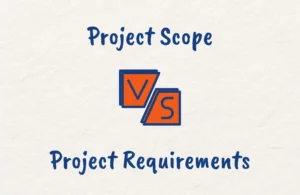Gaining alignment and commitment from stakeholders, especially key ones is imperative for the success of any project.
However, with limited resources especially time, it can be challenging to determine which stakeholders to focus engagement efforts on.
One of the best ways of dealing with this is by performing strategic stakeholder analysis using an engagement matrix to identify and map stakeholders based on their influence and interest.
In this guide, we outline a structured methodology for developing an actionable stakeholder engagement assessment matrix to inform engagement planning and gain clearer visibility into your critical relationships.
What is Stakeholder Engagement?
Stakeholder engagement refers to the process of effectively involving these stakeholders throughout the project lifecycle by understanding their needs and expectations and leveraging targeted strategies to obtain their support for project success.
As a project manager, active engagement is critical to gaining valuable insights from diverse stakeholders, building relationships and trust, and influencing stakeholders to act as champions of the project’s vision and objectives.
You can read more on how to effectively manage stakeholder engagement here.

The 5 Stakeholder Engagement Levels
The PMBOK® Guide (Project Management Body of Knowledge) outlines 5 levels of stakeholder engagement. These are:
- Unaware: At this level, stakeholders are not aware of the project and its potential impacts. They lack information about the project’s existence, objectives, and potential benefits or drawbacks.
- Resistant: Stakeholders are aware of the project but are opposed to it. They may resist the project actively (e.g., by campaigning against it) or passively (e.g., by withholding support or resources). The resistance could be due to a perceived negative impact on their interests.
- Neutral: Stakeholders are aware of the project but neither support nor oppose it. They are indifferent and not engaged in the project’s processes or outcomes.
- Supportive: These stakeholders are aware of the project and its potential impacts and are supportive of it. They might provide resources, assist in overcoming obstacles, or endorse the project to other stakeholders.
- Leading: At the highest level of engagement, stakeholders are not only supportive but also actively involved in ensuring the project’s success. They might take on a leadership role, champion the project, and use their influence to promote its benefits and overcome challenges.
What is a Stakeholder Engagement Assessment Matrix?
A stakeholder engagement assessment matrix is a table that maps the engagement level of each stakeholder in a project and provides a visual of the current and desired engagement of key stakeholders at a glance.
The matrix lists all major stakeholders as rows and has columns defining various engagement levels, such as unaware, resistant, neutral, supportive, and leading. The current engagement level of a stakeholder is denoted as C, and the desired level as D.
You can use this as a tool to facilitate stakeholder analysis and enable targeted communication and engagement strategies to move stakeholders toward more active involvement in the project and fill any gaps between actual and optimal engagement.
It is vital to regularly update the matrix as this provides valuable insight to ensure stakeholder interests are met.
| Stakeholder | Unaware | Resistant | Neutral | Supportive | Leading |
| Stakeholder 1 | C | D | |||
| Stakeholder 2 | C | D | |||
| Stakeholder 3 | CD | ||||
| Stakeholder 4 | C | D | |||
| Stakeholder 5 | C | D |
Purpose of the Stakeholder Engagement Assessment Matrix
The stakeholder engagement assessment matrix is a strategic tool that aids in understanding, planning, and managing stakeholder engagement in a project.
Its primary purposes include:
Identifying Stakeholder Engagement Levels
The matrix helps in identifying the current and desired levels of engagement of each stakeholder.
This can assist in understanding where each stakeholder stands regarding the project and what their involvement should ideally be.
Plan Stakeholder Engagement
By comparing current and desired engagement levels, the matrix facilitates the development of strategies to increase the involvement of key stakeholders or manage the expectations of those who are overly involved.
Monitoring Changes
The matrix is a dynamic tool, meaning it can be updated throughout the project lifecycle to reflect changes in stakeholder attitudes, interests, and engagement levels.
This makes it a valuable resource for monitoring and managing stakeholder relationships over time.
Mitigating Risks
The stakeholder engagement assessment matrix can help identify potential risks related to stakeholder engagement.
For example, stakeholders who are resistant or unaware may pose a risk to the project’s success, while supportive or leading stakeholders can be leveraged to mitigate these risks.
Communication Planning
The matrix can also aid in tailoring communication plans to different stakeholders based on their levels of engagement.
For instance, resistant stakeholders may need more communication to address their concerns, while unaware stakeholders may need more information about the project.

How to Create a Stakeholder Engagement Assessment Matrix
To construct a stakeholder engagement assessment matrix, follow these steps:
1. Identify Stakeholders
The first step is to identify all the stakeholders for your project. These are individuals or groups who have an interest in the project, are affected by its outcome, or perceive themselves to be affected by its outcome.
This could include project team members, clients, end-users, suppliers, competitors, regulatory bodies, etc.
2. Define Levels of Engagement
Next, define the various levels of stakeholder engagement based on the PMBOK® Guide’s five levels: Unaware, Resistant, Neutral, Supportive, and Leading.
3. Assess Current Engagement Levels
For each stakeholder, assess their current level of engagement. This assessment can be based on their recent behaviors, interactions with the project, or direct feedback. As this is a qualitative assessment, it is vital to be as objective as possible.
4. Identify Desired Engagement Levels
Determine where you would like each stakeholder to be in terms of engagement. For example, you may want a currently resistant stakeholder to become at least neutral, or a supportive stakeholder to take on a leading role.
5. Create the Matrix
Create a table with stakeholders listed down the left side, and the levels of engagement across the top. Mark the current and desired levels of engagement for each stakeholder.
6. Develop Engagement Strategies
Finally, based on the gaps between current and desired levels of engagement, develop and implement strategies to move each stakeholder toward the desired level of engagement.
This could include specific communications, meetings, or other forms of engagement.
Benefits of Using the Stakeholder Engagement Assessment Matrix
The stakeholder engagement assessment matrix offers several benefits that can contribute to effective stakeholder management and overall project success including:
1. Enhanced Understanding
The matrix provides a structured way to understand the level of engagement of each stakeholder.
It helps identify who needs more attention or a different approach, aiding in more effective stakeholder management.
2. Strategic Planning
By identifying gaps between current and desired engagement levels, the matrix can assist in developing strategic plans to increase stakeholder engagement, helping to drive project success.
3. Risk Mitigation
The stakeholder engagement assessment matrix can help identify potential risks related to stakeholder engagement.
For instance, stakeholders who are currently resistant or unaware may pose a risk to the project’s success. Having this insight allows for proactive risk management strategies.
4. Improved Communication
The matrix can guide communication strategies. Different stakeholders may require different types and frequencies of communication depending on their level of engagement.
This customized approach can lead to more effective communication and stronger stakeholder relationships.
5. Dynamic Tool
The stakeholder engagement assessment matrix is not a static document. It can be updated throughout the project lifecycle to reflect changes in stakeholder attitudes, interests, and engagement levels.
This helps keep stakeholder management strategies relevant and effective.
6. Resource Allocation
By identifying who the most influential stakeholders are and their engagement levels, resources can be better allocated to ensure these key individuals or groups are properly managed.
7. Monitoring and Evaluation
The matrix provides a visual representation of stakeholder engagement that can be easily monitored and evaluated over time.
This can assist in tracking the effectiveness of stakeholder engagement strategies and making necessary adjustments.
Challenges With Using the Stakeholder Engagement Assessment Matrix
While the stakeholder engagement assessment matrix can be a vital tool in stakeholder management, it has its fair share of challenges which include:
- Subjectivity: Stakeholder engagement can be subjective and may vary depending on who is doing the assessment. Different project team members may have different perceptions of a stakeholder’s level of engagement.
- Dynamic Nature of Stakeholder Engagement: Stakeholder interests and their level of engagement can change throughout a project. This means the matrix needs to be updated frequently to reflect current realities, which can be time-consuming.
- Difficulties in Moving Stakeholders: It can be challenging to move stakeholders from their current level of engagement to a desired level. This could be due to a variety of factors including resistance to change, differing goals, or lack of trust.
- Identifying All Stakeholders: It can be difficult to identify all relevant stakeholders, especially in complex projects. Missing a key stakeholder can lead to problems down the line.
- Time and Resource Intensive: Creating, updating, and using the matrix to guide actions can be resource-intensive. It requires time and effort to assess engagement levels, develop strategies to enhance engagement, and then implement those strategies.
- Over-reliance on the Matrix: There’s a risk that project managers may rely too heavily on the matrix and neglect other important aspects of stakeholder management, such as building relationships and direct communication.

Stakeholder Engagement Assessment Matrix PMP Exam Tips
As per the PMBOK 6th edition, the stakeholder engagement assessment matrix is a key output of the Plan Stakeholder Engagement process in the Project Stakeholder Management knowledge area.
If you are preparing for the PMP exam, this is an area where your knowledge may be tested and by understanding its role in stakeholder management, you’ll be well-prepared to answer any related questions on the PMP exam.
The Matrix is created in the Plan Stakeholder Engagement process. This process is about developing appropriate strategies to effectively engage stakeholders throughout the project lifecycle by analyzing their needs, interests, and potential impact.
It acts as an input to the Monitor Stakeholder Engagement process. In this process, the matrix is used to compare the current engagement levels of stakeholders with the desired levels to identify any gaps and develop plans to enhance engagement where necessary.
Conclusion
As we’ve explored, the stakeholder engagement assessment matrix offers tremendous value in managing the diverse needs of your project’s stakeholders.
By regularly reviewing and updating the matrix, you can gain crucial insights to guide your engagement efforts, then tailor strategies to fill engagement gaps and deepen stakeholder support and involvement.
Remember to update the stakeholder engagement assessment matrix throughout the project as it is not a static document. project and stakeholder attitudes and behaviors evolve.
FAQs
How Often Should the Stakeholder Engagement Assessment Matrix be Updated?
The Stakeholder Engagement Assessment Matrix should be updated regularly – ideally, at each major milestone or phase of the project. However, if significant changes occur in stakeholder attitudes or project direction, immediate updates may be necessary.
How Do You Score Stakeholder Engagement?
Scoring stakeholder engagement often involves assigning values to different engagement levels, such as Unaware (1), Resistant (2), Neutral (3), Supportive (4), and Leading (5). Regular assessments and updates help maintain accurate scores reflecting stakeholders’ current engagement levels.
What is a KPI for Stakeholder Engagement?
A Key Performance Indicator (KPI) for stakeholder engagement could be the percentage of stakeholders moving from a lower level of engagement (e.g., Unaware, Resistant) to a higher level (Supportive, Leading) over a defined period.





